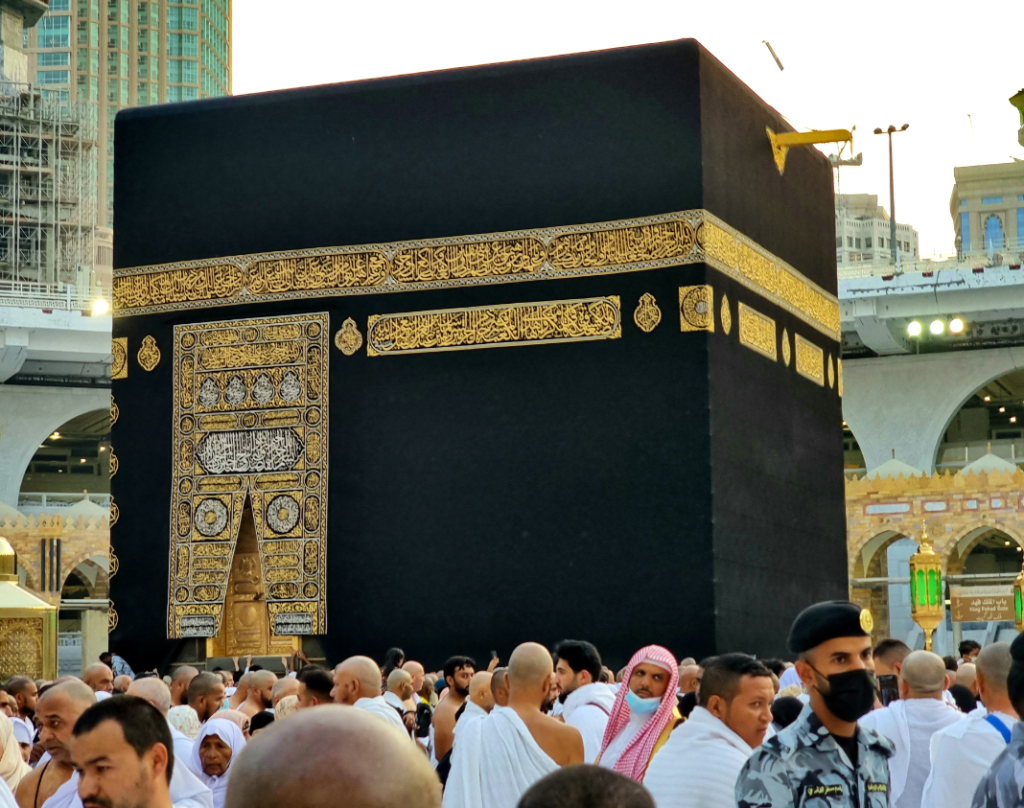
In the Islamic tradition, a mosque or Masjid is much more than just a structure where Muslims congregate and pray. It signifies a shelter, an abode of education, religious activities, a place where aid is distributed, and the heart of social unity. The Arabic term “sajada,” which means ‘to prostrate,’ and illustrates full devotion to Allah. It is the place where Muslims meet at least five times a day to offer prayers, side by side, irrespective of ethnicity, nationality, or class in society. This is the reason for the importance of the Mosque for Muslims.
History of The Mosque and Its Meaning In Islam
The mosque means so more than a building as it is a means of sustenance for the soul. It serves as a direct link for a follower and their Creator. The importance of a mosque was marked through the very first mosque that the holy Prophet Muhammad (peace be upon him) built after migrating to Madinah, which was Quba. Inevitably, mosques were fundamental to the Islamic civilization as they were used for prayers, policies, teaching, and welfare.
In Islam, there is a direct encouragement and promise of great reward for those who frequently visit Azan making the mosque their second home. There is a hadith tradition where the loved ones of Allah are praised shamelessly and their attendance is vividly cherished. It also talks about how the masjid heals the heart and the same evacuates the spirit to new heights.
The Historical Development of Mosques
The Earliest Known Mosque in the Islamic Period
In historical perspective, the first ever mosque in Islamic history is the Prophet’s Mosque, Al-Masjid an-Nabawi. It was built by the Prophet Muhammad (peace be upon him) in Madinah. It served a myriad of purposes and was a worship area, a court, a school, and a community center. The Prophet’s Mosque was constructed using palm trunks and mud bricks.
Mosque construction began to spread across the expanding world of Islam. The simplicity of early mosques mirrored the modesty of early Muslims. However, with the expansion of Islamic empires, mosques began to change in order to match the cultural diversity of the world while still preserving the main religious function.
Change of Mosque Architecture Throughout The Years
Mosques have undergone architectural changes over the years. They have maintained the main pillars of Islamic architecture, such as the mihrab (the prayer niche that faces Mecca) and minbar (the pulpit where the khatib stands to deliver sermons on Friday).
- Ottoman Empire: Addition of lavish domes and tall, slender minarets.
- Moorish Spain: Included detailed arabesques and horseshoe arches.
- South Asia is known for their bright colors and more detailed courtyards.
The Sacred Nature of the Mosque
A Place for Worship and Prayer
The main duty of a mosque is to be a place of prayer (salah) which is completed five times a day. Performing prayer in a group at the mosque enhances the reward to many times more than praying alone. The house of the worshipper is engulfed in the remembrance of Allah, which helps the soul and anchors the heart.
Taraweeh is one of the special prayers that are performed in Ramadan and mosques also offer voluntary prayers (nawafil) and qiyam which are late night prayers. A mosque serves as a place that continuously reminds your life’s ultimate aim, which is submission to the One true God.
Strengthening the Relationship with Allah
The mosque acts like a spiritual oxygen tank for a believer. The faithful are encouraged to attend regularly as it helps lower the level of taqwa (mindfulness of Allah), strengthen iman (faith), and provide moral support while rushing through daily life. Moments of tranquility are created. It allows the believer to step back from worldly stress and shift focus to divine objectives.
Promoting Brotherhood and Unity
The above passage clearly shows the advancement of brotherhood and unity. It is one of the pivotal roles of a mosque. Within a mosque, believers don’t consider each other’s financial or social status and treat one another with warmth. It’s a place where differences are negated and the bonds of faith become tighter than blood. The final instructions of the Holy Prophet Muhammad (PBUH) were to make sure that the Ummah acts as one body.
Social Welfare Activities and Mosques
Islam encourages charitable donations, zakat, and other welfare actions throughout life. Additionally, mosques have hospitals and offer prior examination without charge. Mosques have also responded to local needs by creating immediate relief food storage centers and distribution points. Mosques have made it their duty never to allow someone who is truly in need to remain unattended, whether sick, hungry, or desperate.
Conclusion
In terms of importance, the mosque occupies a significant status in Islam. It’s not merely a place for worship, but the core unit of Muslim society. It’s a place where a believer’s relationship with Allah is rekindled, and they can seek and access essential information and assistance at the same time. It makes joining the Muslim Brotherhood easy. The Mosque for Muslims has very much importance.
FAQs
Why is the mosque regarded as the heart of a Muslim community?
The mosque is termed as the heart of the Muslim community as it plays a wide range of functions, not limited to offering prayers. It is a hub for educational and social services, a place for community bonding, and a source for moral leadership.
Can non-Muslims enter mosques?
Many mosques across the globe admit non-Muslim guests. Visitors are asked to observe modest dress and etiquette appropriate to the holy venue. Various educational initiatives are provided by some mosques as a foundation for improving relations between different faiths.
What activities happen inside a mosque besides offering prayers?
Apart from prayers, mosques conduct classes on the Qur’an, issue lectures, conduct charity programs, organize youth programs, perform marriages and funerals, and hold other social functions. Mosques act as community centers that provide diverse helpful activities.
Why are mosques built with minarets and domes?
Generally, minarets have both practical and symbolic functions. A minaret was used to deliver the call to prayer (adhan) to the surrounding community.
How can I contribute to activities within my local mosque?
Giving a financial donation, volunteering your time, taking part in mosque programs, teaching classes, maintaining the mosque, and encouraging others to engage with the community constructively all help positively contribute.
